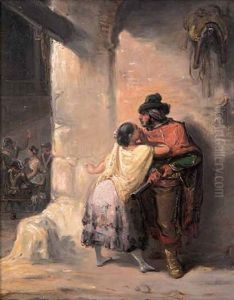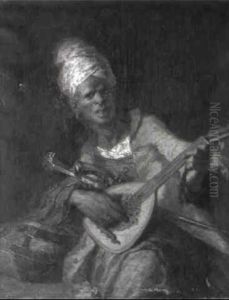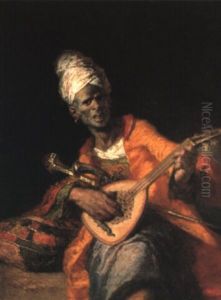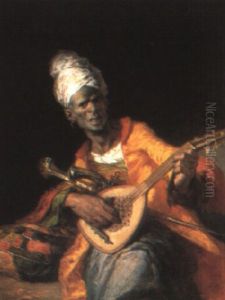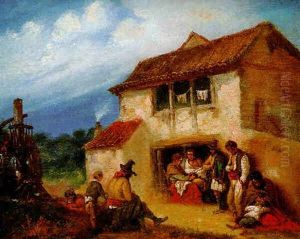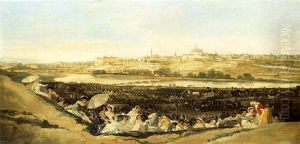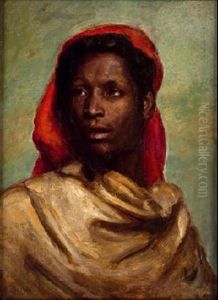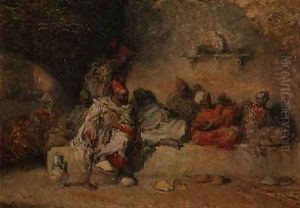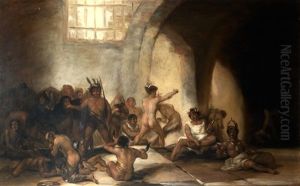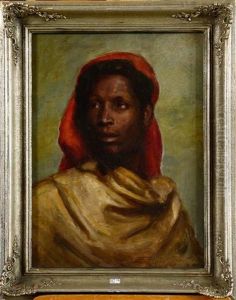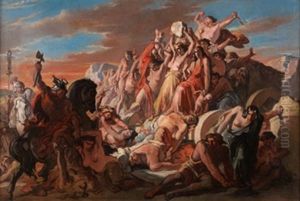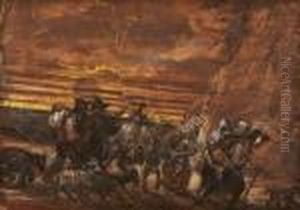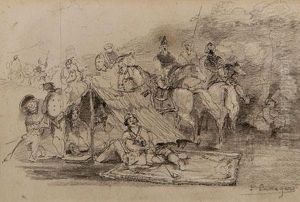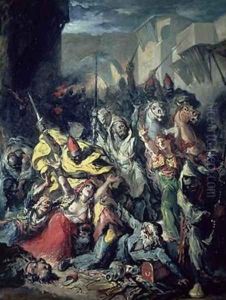Francisco Lameyer Paintings
Francisco Lameyer y Berenguer was a 19th-century Spanish artist known for his paintings, watercolors, and engravings that often depicted Orientalist themes, a popular subject matter among European artists of his time. Born on April 28, 1825, in Valencia, Spain, Lameyer developed an interest in the arts at an early age. His fascination with Orientalist themes was likely influenced by the romantic and exotic perceptions of the East that prevailed in European artistic circles during the 19th century.
Lameyer's career gained momentum when he moved to Madrid, where he became associated with the Royal Academy of Fine Arts of San Fernando, an important institution for the arts in Spain. He was also influenced by his travels in North Africa and the Middle East, where he was captivated by the landscapes, people, and cultures he encountered. These experiences provided a rich repository of imagery and inspiration for his artworks. Lameyer's work often featured detailed architectural elements, vibrant market scenes, and genre paintings that showcased the everyday life of the people in these regions.
His engravings and illustrations gained him considerable recognition, particularly his contributions to the publication 'La Ilustración Española y Americana,' which was an important cultural magazine of the time. Lameyer's illustrations brought the allure of distant lands to the European audience, who were eager to consume images and stories of the 'Oriental' world. In addition to his Orientalist works, Lameyer was also known for his depictions of historical events and figures, contributing to the visual culture of Spain's own past.
Throughout his career, Lameyer exhibited his works in various exhibitions and received accolades for his contributions to art. His paintings can be found in several collections and museums, and his legacy is appreciated by those who study 19th-century European Orientalism. Francisco Lameyer y Berenguer passed away on June 30, 1877, in Madrid, leaving behind a body of work that continues to be studied and admired for its artistic merit and historical significance.
